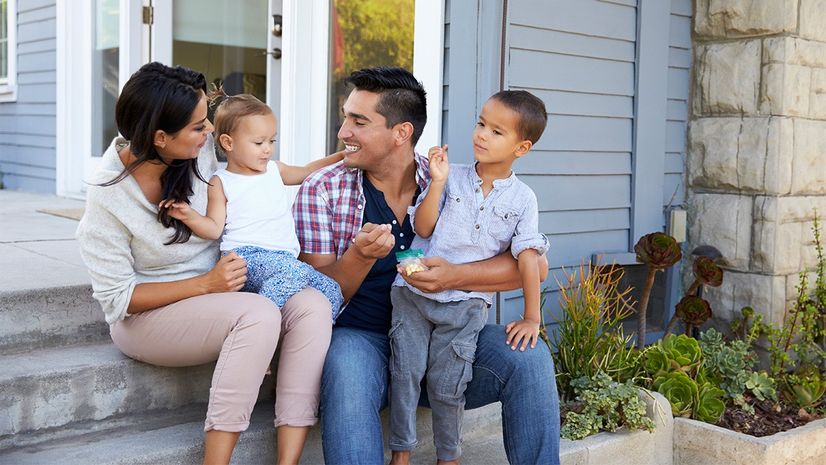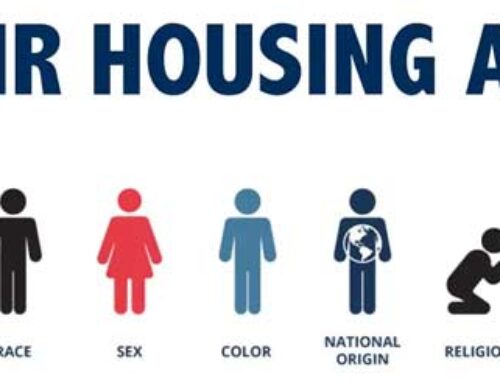By Clare Trapasso
Mar 16, 2022

More Hispanic Americans are becoming homeowners, but the COVID-19 pandemic has slowed them down.
Hispanic buyers are eager to own their own homes, but they’re running up against many of the obstacles plaguing the overall buying market, according to the 2021 State of Hispanic Homeownership report. They include few homes for sale, record-high prices, and competition from investors and wealthier buyers who can put down all cash or higher down payments than many can afford.
The community was also affected by layoffs at the start of the pandemic, as many Latinos work in hospitality, restaurant, and other service industries that were decimated at the beginning of the coronavirus crisis in early 2020.
“Homeownership is very important to the Hispanic community,” says George Ratiu, manager of economic research at Realtor.com®. “They value the opportunity to build wealth through it. They plan to leave their homes to their children. It’s a physical piece of the American dream they aspire to achieve.”
The National Association of Hispanic Real Estate Professionals® and the Hispanic Wealth Project based the report on a survey of 620 Latino real estate agents covering 39 states and Puerto Rico. The survey was conducted Feb. 10–28. Mortgage, U.S. Census Bureau, and other government data were also included.
About 657,000 Latino households purchased homes last year, helping to boost their homeownership rate to 48.4%. That’s 30 percentage points lower than white Americans; among this group, three-quarters own their homes.
“That gap is closing slowly, but it’s still a huge gap. Homeownership creates a more stable environment for families, it … is a gateway to the middle class for many families,” says Gary Acosta, CEO and co-founder of NAHREP. “Hispanic homebuyers, despite the headwinds, proved to be extremely resilient. They’re willing to try three, four, five, six different times to go after a property and then another one and another one.”
They are expected to eventually make up 70% of new homeowners over the next two decades, according to the Urban Institute, a think tank. That’s because the population is growing and more members of the community are aging into prime homebuying years.
While the homeownership rate is lower than that of white Americans, Hispanic home shoppers are seeking to close that gap. About 58% of Hispanic Americans plan to buy their first home—compared with just 34% of the general population, according to a recent Realtor.com® survey conducted with NAHREP. (More than 1,000 Hispanic Americans participated in the online survey in January.)
Latinos in America are a median 30 years old and the average first-time homebuyer is 33, according to the NAHREP report. (The median age of white Americans is 44.)
Some would-be homeowners are moving to cheaper parts of the country with strong economies, plenty of companies setting up shop, and more reasonable costs of living. Texas, Arizona, and Tennessee, particularly the Nashville area, saw the biggest influx of Hispanics, according to the NAHREP report. Meanwhile, they’re leaving the more expensive parts of the country, including California, New York, and Virginia (outside of Washington, DC).
“One of the reasons Hispanic homeownership increased consistently … is because Latinos are willing to migrate to areas where there are jobs and homes are more affordable,” says Acosta.
That’s key as many members of the community, along with the general population, lost their jobs at the beginning of the pandemic.
“Because Hispanics have high employment numbers in some of the hardest-hit sectors, such as hospitality and restaurant services, they were hit double hard,” says Acosta.
However, another challenge many Latino buyers are facing is the difficulty in obtaining mortgages—and then having their home offers accepted. They were 81% more likely to be denied a loan than non-Latino applicants.
“Access to credit is a challenge, so it can be harder to qualify for mortgages,” says Acosta, who notes that many Hispanic families are self-employed and small-business owners. “Self-employed borrowers have a tougher time qualifying for mortgages.”
In addition, many Hispanic buyers rely on mortgages that require smaller down payments. The problem is these mortgages can often have tougher qualifying criteria.
In today’s ultracompetitive housing market, it’s also tough to get sellers to accept lower down payment offers, especially if someone else is offering them all cash.
“They may face more challenges in this tight market,” says Ratiu.
Source- https://www.realtor.com/news/trends/why-hispanic-buyers-struggling-to-become-homeowners/






